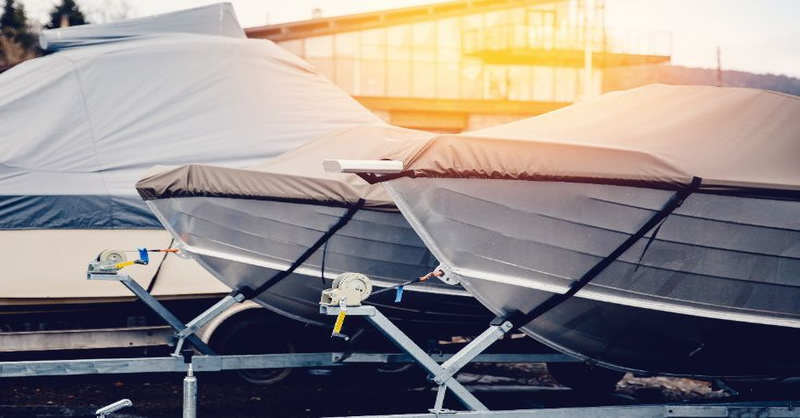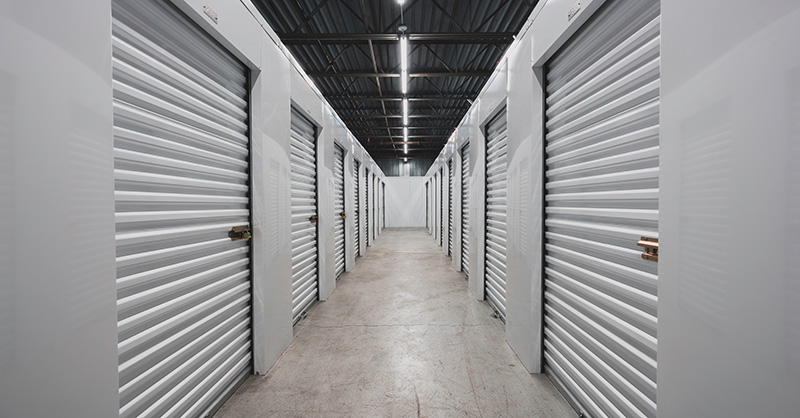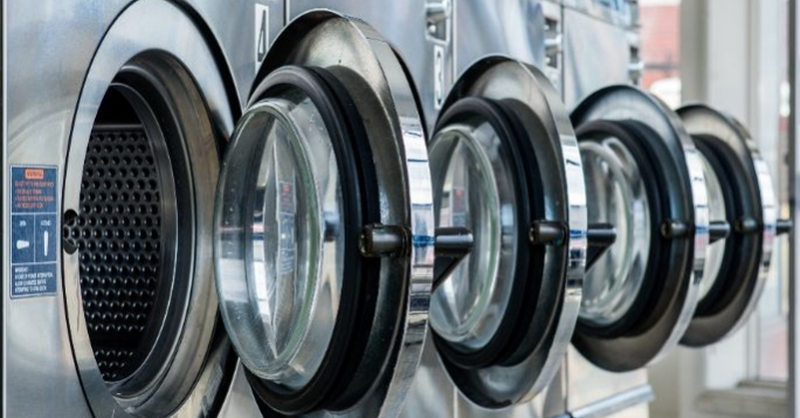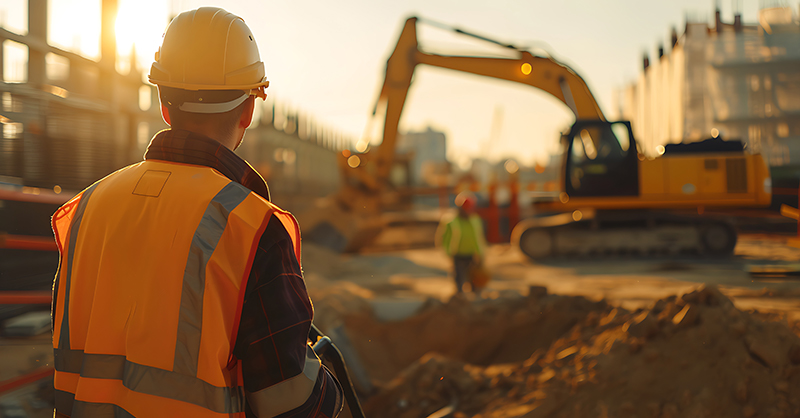Stay Safe While Performing Welding, Cutting and Other Hot Work
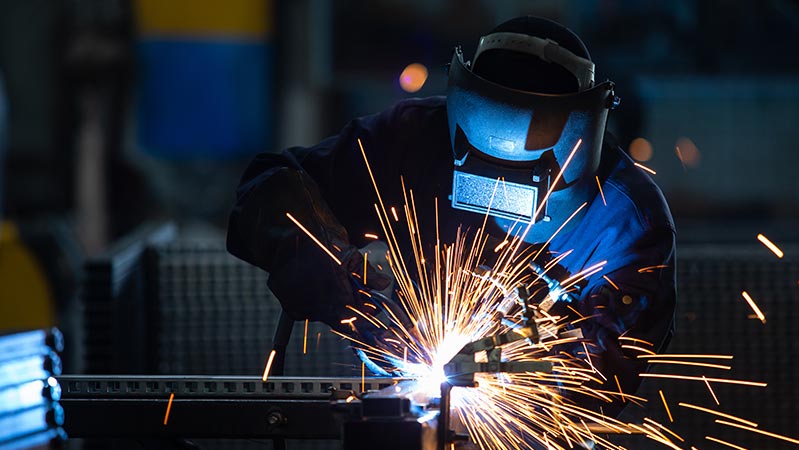
Hot work, such as welding, cutting, brazing and/or grinding can present a significant opportunity for fire and/or injury. The purpose of this guide is to help ensure a safe and healthy environment exists whenever hot work is conducted. Company employees and/or contractors should apply all components of a hot work program before commencing any hot work.
Jump to:
- Introduction to Staying Safe While Performing Hot Work
- Hot Work: Fire Safety and Preparation
- Inspection of Equipment: General Requirements
- Hot Work: Gas Welding and Cutting
- Hot Work: Ventilation and Protection
- Hot Work: Protection of Personnel Checklist
- Hot Work: Out of Service Procedures
Responsibilities
It is important to clearly communicate assigned responsibilities to all employees and contractors within the hot work program. Examples include:
Management
- Provide training for all employees whose tasks include heat, spark or flame producing operations such as welding, brazing or grinding.
- Develop and monitor effective hot work procedures.
- Provide safe equipment for hot work.
- Provide proper and effective personal protective equipment (PPE) for all hot work.
Supervisors
- Monitor all hot work operations.
- Ensure all hot work equipment and PPE are in safe working order.
- Allow only trained employees to conduct hot work.
- Ensure permits are used for all hot work outside of designated areas.
Employees
- Follow all hot work procedures.
- Properly use appropriate hot work PPE.
- Inspect all hot work equipment before use.
- Report any equipment problems to their supervisor.
- Not use damaged hot work equipment.
Definitions
Hot Work Procedures: Processes such as arc welding, oxy-fuel gas welding, open-flame soldering, brazing, thermal spraying, oxygen cutting, arc cutting or any other activity which results in sparks, fire, molten slag or hot material and has the potential to cause fires or explosions.
Hot Work Permit: A document issued by the permit authorizing individual (PAI) for the purpose of authorizing the performance of hot work activity.
Permit Authorizing Individual (PAI): The individual designated by management to authorize hot work.
Designated Area: A permanent location designed or approved for hot work procedures not requiring a hot work permit for hot work procedures.
Permit-Suggested Area: Any area where hot work procedures are conducted that is not considered to be a designated area and is made fire-safe by removing or protecting combustibles from ignition sources.
Management: For the purpose of this guide, all persons, including owners, contractors, educators and so on, who are responsible for hot work operations.
Fire Watch: An employee designated to watch the hot work area for hazards and fires.
Hazards: For the purpose of this guide, hazards refer to fires and explosions, skin burns, welding “blindness”, foreign object eye injuries and respiratory hazards from fumes and smoke.
Fire Safety/Inspection of the Area
Permit Authorizing Individuals (PAI) – A PAI is suggested at each site where hot work procedures are conducted in permit-suggested areas.
What is the role of the PAI?
The PAI is permitted to be, among others, the supervisor, foreperson, property owner or representative, or health and safety administrator. The PAI cannot be the hot work operator.
The PAI is the person responsible for issuing a hot work permit for hot work procedures conducted in a permit-suggested area. The PAI should ensure that all precautions have been taken to ensure that fire hazards and ignition sources have been removed or protected.
The hot work operator should consult the PAI and obtain a hot work permit before beginning any hot work procedures in areas outside of a designated area.
The PAI should inspect the permit-suggested area at least once per day each day the permit is valid to ensure the area is fire-safe.
Work Area Fire Safety Preparation – The permit-suggested work area and equipment should be prepped before requesting a Hot Work Permit. Please refer to the Work Area Hazard Assessment Form included in this guide.
What is the procedure for preparing the permit-suggested area?
Before seeking a hot work permit to conduct hot work procedures, the hot work operator should do the following to ensure a fire-safe work area:
- Consider moving the work out of the permit-suggested area to a designated area.
- Ensure that hot work equipment to be used is in satisfactory condition and is in good working order.
- If combustible materials, such as paper clippings (dust), wood shavings or textile fibers, are on the floor, the floor should be swept clean for a radius of 35 feet as well as:
- Combustible floors should be kept wet, covered with damp sand, or protected by noncombustible or fire-retardant shields.
- If the floors are wet, hot work operators using arc welding equipment should be protected from electric shock.
- Any materials that could catch fire should be relocated no less than 35 feet in all directions from the worksite.
- If relocation of the materials cannot be done, then those materials should be protected with fire-retardant covers or shielded with metal or fire-retardant guards or curtains.
- The edges of covers should be tight on the floor to prevent the entrance of sparks, including where the edges of multiple covers overlap.
- Openings or cracks in walls, floors or ducts within 35 feet of the site should be tightly covered with fire-retardant or noncombustible material to prevent the passage of sparks to adjacent areas.
- Ducts and conveyor systems that might carry sparks to distant combustibles should be shielded, shut down or both.
- If hot work procedures are conducted near walls, partitions, ceilings or roofs of combustible construction, fire-retardant shields or guards should be installed to prevent ignition.
- If hot work procedures are to be conducted on one side of a wall, partition, ceiling or roof, one of the following should be done:
- If combustibles are located on the opposite side, then those combustibles should be relocated.
- If the combustibles cannot be relocated, then a fire watch should be established located on the opposite side from where the work is being performed.
- If hot work procedures are to be conducted on pipes or other metal that is in contact with combustible walls, partitions, ceilings, roofs or other combustible materials, then hot work procedures should do be conducted if those combustibles are close enough to be ignited by heat traveling through the metal (conduction).
- Fully charged and operable fire extinguishers that are appropriate for the type of possible fire should be available immediately at the work area.
- The following should be done if hot work procedures are to be conducted near a sprinkler head:
- A wet rag should be laid over the sprinkler head and then removed at the conclusion of the hot work procedures.
- During hot work procedures, special precautions should be taken to prevent accidental operation of the sprinkler system.
- Steps should be taken to protect nearby personnel from dangers such as heat, sparks, and slag, especially when hot work operations are conducted overhead. This sign should be posted in conspicuous places outside of the permit-suggested area to alert other personnel near the work area. Red DANGER tape should be used to create a barrier around the work area to prevent passersby from wandering into the work area.
Hot Work Permits – Hot Work Permits are issued by the PAI for work in permit-suggested areas.
Who can issue a hot work permit?
Only the PAI can issue a hot work permit to the hot work operator.
When is a hot work permit suggested?
A hot work permit is suggested whenever hot work procedures are conducted in any area outside of a designated area. Designated areas are exempt from the permit because they are designed and regularly inspected to be fire-safe.
How long is a hot work permit good for?
Based on local conditions, the PAI determines the length of the period for which the hot work permit is valid.
What should I do with the hot work permit after I get it?
The hot work permit should be posted in a conspicuous place in the permit-suggested area during the entire time the permit is valid.
What happens if my hot work permit is no longer valid?
That hot work permit can no longer be used and a new hot work permit should be obtained from the PAI before work can resume in the permit-suggested area.
What does a hot work permit look like?
Please refer to the sample Hot Work Permit included in this guide.
Fire Watch
When is a fire watch suggested?
A fire watch is suggested any time hot work procedures are conducted outside of a designated area.
What are the roles and requirements of a fire watch?
The fire watch should be trained to understand the inherent hazards of the worksite and the hot work. The fire watch should ensure that safe conditions are maintained during hot work procedures. The fire watch should also watch for fires in all exposed areas and try to extinguish them only when the fires are obviously within the capacity of the equipment available. If the fire watch determines that the fire is not within the capacity of the equipment available, then the fire watch will sound the alarm immediately. The fire watch should be familiar with the facilities and procedures for sounding an alarm in the event of a fire.
What authority should the fire watch have?
The fire watch should have the authority to stop the hot work procedures if an unsafe condition develops.
How long does a fire watch last?
The fire watch should be maintained during hot work procedures and then for at least a half-hour after completion of hot work procedures to detect and extinguish smoldering fires.
How many fire watches are suggested at a hot work permit-suggested work area?
More than one fire watch is suggested if combustible materials that could be ignited by hot work procedures cannot be directly observed by the initial fire watch. If hot work procedures are being performed above multiple levels, then a fire watch will be suggested on every level under the hot work. Fire watchers should take precautions to protect themselves from heat, sparks and slag.
Is a fire watch allowed to fulfill other job duties while serving as a fire watch?
No, the fire watch is allowed only to stand at the permit-suggested area and watch for potential fires. The fire watch is not permitted to engage in any activities other than fire watching.
Fire Safety General Requirements
How many fire extinguishers should be in the permit-suggested area?
The number of fire extinguishers should match the type of work and the number of combustible materials in the area. If there is a considerable number of combustible materials in or around the area, then more than one extinguisher will be needed. If more than one fire watch is suggested for the work, then each fire watch will have an extinguisher.
Are there any areas where hot work procedures are not allowed?
Yes, hot work procedures are not allowed to be conducted in the following applications:
- In areas not authorized by management.
- In sprinklered buildings where sprinklers are impaired.
- In the presence of explosive atmospheres (i.e., where mixtures of flammable gases, vapors, liquids or dusts with air exist).
- In the presence of unclean or improperly prepared drums, tanks or other containers and equipment that have previously contained materials that could develop explosive atmospheres.
- In areas where there is dust accumulation of greater than 1/16 inch within 35 feet of the area where hot work procedures will be conducted. All dust accumulation should be cleaned up.
Fire Safety in Designated Areas
What are the fire safety requirements for a designated area?
- Floors should be regularly swept and cleaned of combustibles within 35 feet of the work area.
- Flammable and combustible liquids and materials should be kept 35 feet from the designated work area.
- At least one 10lb dry chemical fire extinguisher should be within access of the 35-foot work area.
- Protective dividers such as welding curtains or noncombustible walls should be provided to contain sparks and slag to the combustible-free area.
Fire Safety for hot work on drums, containers, tanks or hollow structures.
What are the requirements for hot work on drums, containers, tanks or hollow structures?
- Before welding, cutting or heating is conducted on drums, containers, tanks or hollow structures that have contained toxic or flammable substances, they should be filled with water or thoroughly cleaned of such substances, ventilated and tested. Pipelines that contain flammable gases should be purged and locked out before conducting hot work procedures on them.
- Before heat is applied to a drum, container, tank or hollow structure, a vent or opening should be provided for the release of any built-up pressure during the application of heat.
- Except when contents are being removed or transferred, drums pails, tanks and other containers that contain or have contained flammable liquids should be kept closed. Empty containers should be removed to a safe area apart from hot work procedures or open flames.
Inspection of Equipment
General Requirements
After I obtain the hot work permit, what do I need to do before I begin hot work for the day?
An equipment inspection should be conducted before using any arc or gas welding equipment on each shift.
Gas Welding Equipment
What should I inspect before using gas welding equipment?
Items that should always be inspected before use include:
- Is flash-back protection provided by an approved device that will prevent flames from traveling into cylinders?
- Are hoses for use showing defects such as cuts, excessive wear or cracks?
- Are pressure reducing-reducing regulators used only for the gases and pressures for which they are intended?
- Are gauges on oxygen regulators marked “USE NO OIL”?
- Are all gauges in proper working order and have the clear guards intact?
- Do cylinders have gas and are fittings on tight?
- Is personal protective equipment (welding hood, gloves, apron, welding jacket, etc.) available with no defects?
- Do torches have leaking shutoff valves, hose couplings and tip connections?
- Are torches ignited by friction lighters or other approved devices and not by matches, lighters, or from other hot work?
- Are fuel gas and oxygen hoses easily distinguishable from each other by color or surface characteristics readily distinguished by the sense of touch?
Report any defective equipment to your supervisor and do not use it until it is repaired or replaced before use.
Arc Welding Equipment
What should I inspect before using arc welding equipment?
Items that should always be inspected before use include:
- Is the electrical cord, electrode holder and cables free from defects (no cable splices are allowed within 10 feet of the electrode holder)?
- Check all connections to the machine to make certain they are properly made.
- Is PPE (welding hood, gloves, apron, welding jacket, etc.) available and without defects?
- Is the frame or case of the welding machine effectively grounded?
- Are electrode holders placed so that they cannot make electrical contact with persons, conducting objects, fuel or compressed gas tanks?
- Are terminals for welding leads protected from accidental electrical contact by personnel or metal objects?
- Is the control apparatus enclosed on all types of arc welding machines?
- Ensure that no connections for portable control devices, such as push buttons carried by the operator, are connected to an AC circuit of higher than 120 volts.
- Does each welding machine have a separate disconnect switch or controller provided at or near the machine?
Report any defective equipment to your Supervisor and do not use until it is repaired or replaced before use.
Gas Welding and Cutting Safe Operating Procedures
Safe Practices
What are safe practices that apply to operating gas welding equipment (oxygen and fuel gasses)?
The following is a list of suggested safe operating procedures for gas welding:
- Do not store oxygen cylinders near highly combustible material (especially oil and grease); near reserve stocks of carbide, acetylene or other fuel gas cylinders; near any other substance likely to cause or accelerate a fire.
- Oxygen cylinders in storage should be separated from fuel-gas cylinders or combustible materials (especially oil or grease), at a minimum of 20 feet or by a noncombustible barrier at least five (5) feet high having a fire-resistance rating of at least one half-hour.
- If cylinders are stored inside buildings, they should be stored in a well-protected, well-ventilated, dry location at least 20 feet from highly combustible materials such as oil or excelsior.
- All cylinders should be stored in assigned places away from elevators, stairs or gangways.
- Assigned storage spaces should be located where cylinders will not be knocked over or damaged by passing or falling objects, or subject to tampering with by unauthorized persons.
- All cylinders should not be kept in unventilated enclosures such as lockers or cupboards.
- Empty cylinders should have their valves closed.
- Valve protection caps should always be in place, hand tight, except where cylinders are in use or connected for use.
- Compressed gas cylinders should be marked with either the chemical or the trade name of the gas inside the cylinder.
- All compressed gas cylinders should be stored away from sources of heat.
- Acetylene cylinders should be stored valve end up. Any acetylene cylinder that happens to become horizontal should never be used, tagged “Out of Service”, and removed by a cylinder company.
- If oxygen cylinders are stored outside of generator houses, then the generator and the cylinders should be separated by a gastight, noncombustible partition having a fire-resistance rating of at least one hour.
- Cylinders, cylinder valves, couplings, regulators, hoses and apparatus should be kept free from oily or greasy substances.
- Cylinders should be secured in a manner that prevents them from being dropped, struck or permitted to strike each other violently at all times. Materials used to secure the cylinders should not be combustible, and should be capable of supporting the weight and force needed to appropriately support the cylinders.
- Valve-protection caps should not be used for lifting cylinders from one vertical position to another.
- Cylinders should not have fixed handwheels, keys, handles or nonadjustable wrenches on the valve stems while the cylinders are in service.
- Cylinder valves should be closed before moving a cylinder and when work is finished. If hot work is being conducted in an enclosed space, cylinder valves should be closed whenever the torch is not in use or left unattended for an extended period.
- Cylinders should be kept away from sparks, hot slag or flame produced by hot work procedures, or fire-resistant shields should be provided and used to protect the cylinders.
- Cylinders should not be positioned where they can become part of an electric circuit.
- Cylinders should not be used as rollers or supports.
- Only the proper tools are allowed to be used to open cylinder valves.
- All fuel-gas cylinders should be placed valve end up, especially when being transported by powered vehicles.
- Cylinders with leaky valves or fittings should be taken outdoors away from ignition sources and other individuals and slowly emptied. The cylinder should be dealt with in the manner outlined by the Out of Service procedures section of this guide.
- Repair of regulators should be performed by properly instructed skilled mechanics.
- Cylinders containing oxygen, acetylene or other fuel gas should not be taken into confined spaces.
- Manifolds should be placed in safe, well-ventilated and accessible locations and not within enclosed spaces.
- Oxygen and fuel gas hoses should not be interchangeable and should be distinguishable by color or by surface characteristics. A single hose having more than one gas passage shall not be used.
- Hose couplings should be of the type that cannot be unlocked or disconnected without a rotary motion.
- Boxes used to store fuel gas hose should be ventilated.
- All oxygen and fuel gas regulators and their gauges should be in proper working order.
What are the safe practices that apply to operating arc welding equipment?
The following is a list of safe operating procedures for arc welding:
- Workers and other persons near an arc welding operation should be protected by noncombustible or flame-proof screens or shields where the work allows. These screens should not impede ventilation by significantly restricting airflow through the work area. If the work does not allow these screens or shields then goggles should be suggested.
- Cables with damaged insulation or exposed bare conductors should be replaced, tagged “Out of Service” and not used.
- Joining lengths of work and electrode cables shall be done by the use of connecting means specifically intended for the purpose. The connecting means should have adequate insulation for the service conditions.
- Open-circuit (No Load) voltages of arc welding and cutting machines should be as low as possible, consistent with satisfactory welding.
- When open-circuit voltages are suggested to be higher, a mean(s) should be provided to prevent the operator from making accidental contact with the higher voltages.
- Control apparatus should be enclosed on all types of arc welding machines.
- Terminals for welding leads should be protected from accidental contact by personnel or metal objects.
- Connections for portable control devices, such as push buttons carried by the operator, are connected to an AC circuit of higher than 120 volts.
- The frame or case of a welding machine should be effectively grounded, and the grounding should be checked.
- Electrode holders should be placed so that they cannot make electrical contact with persons, conducting objects, fuel or compressed gas tanks.
- Cables should be free from repair or splices for a minimum of 10 feet from the cable end to which the electrode holder is connected.
- Hot electrode holders should not be dipped in water because this may expose the operator to electrical shock.
- When the operator leaves his/her work or stops work for any appreciable length of time, or when the machine is to be moved, the power supply switch to the equipment should be opened.
- Coiled welding cable should be spread out to avoid serious over-heating and damage to insulation.
- The work lead should be firmly attached to the work; magnetic work clamps should be freed of adherent metal particles of spatter on contact surfaces.
- Machines that become wet should be thoroughly dried and tested before they are used again.
- Conduits containing electrical conductors should not be used for completing a work-lead circuit.
- Pipelines should not be used as a permanent part of a work-lead circuit, but may be used during construction, extension or repair provided current is not carried through threaded joints, flanged bolted joints, or caulked joints and that special precautions are used to avoid sparking at the work-lead cable.
- Chains, wire ropes, cranes, hoists and elevators should not be used to carry welding current.
- Where a structure, conveyor or fixture is regularly employed as a welding current circuit, joints should be bonded or provided with adequate current collecting devices.
Ventilation and Protection
Why is ventilation important during welding and cutting procedures?
When welding/cutting is conducted on metal, it releases fumes into the air which are capable of being inhaled into human lungs. Ventilation is important because overexposure, through inhalation, of some welding fumes can be harmful. Proper ventilation removes contaminated air from the work area and replaces it with fresh air preventing overexposure to welding fumes.
Is ventilation the only control needed to prevent overexposure?
No, sometimes the use of respirators and even self-contained breathing apparatuses (SCBA) is suggested for protection from overexposure to metal fumes.
How do I know if I am being overexposed to harmful welding fumes?
You will not know by yourself. This guide will provide ventilation requirements to be used whenever specific metals are being welded to eliminate the possibility of overexposure altogether. By following these requirements employee protection from overexposure to welding fumes can be achieved. It is also very likely that air sampling in work areas will need to be conducted to evaluate employee exposure levels to welding fumes.
What are these protective requirements?
The following table lists the metals that are being welded and the requirements for operators during welding procedures in general industry settings.
Requirements | |||
Metal Compound | Confined Space | Indoors | Outdoors |
Fluorine Compound | Air replacement or airline respirator or self-contained breathing apparatus needed | Air sample tests to determine if exhaust hood, booth, airline respirator is suggested | Same as Indoors |
Lead
Zinc (Galvanized Metals) | Air replacement or airline respirator or self-contained breathing apparatus needed | Exhaust hood or booth | Combination particulate and vapor-and-gas removing type respirator if tests indicate need |
Beryllium | Exhaust hood or booth or airline respirator if air sample tests indicate need | Exhaust hood or booth and airline respirator if air sample tests indicate need | Exhaust hood and airline respirator if air sample tests indicate need |
Cadmium
Mercury
| Exhaust hood or booth or airline respirator if air sample tests indicate need | Exhaust hood or booth or airline respirator if air sample tests indicate need | Combination particulate and vapor-and-gas removing type respirator if tests indicate need |
What if I am welding a metal that is not listed on the chart above?
Mechanical ventilation at 2,000 cubic feet of air per minute per welder is suggested in general industry settings during the following:
- When welding or cutting on metals other than the ones described in the chart above.
- There is less than 10,000 cubic feet of space per welder.
- Where the ceiling height is less than 16 feet.
- In confined spaces.
- Where structural barriers (such as partitions or balconies) significantly obstruct cross ventilation.
Is there a difference between general industry and construction?
Yes, there is a difference between the general industry requirements and the construction requirements. The following table lists the metals that are being welded and the requirements for operators during welding procedures in construction settings.
Requirements | |||
Metal Compound | Confined Space | Indoors | Outdoors |
All Metals | Mechanical ventilation or exhaust hood |
|
|
Zinc-bearing base or filler metals; lead base metals; cadmium-bearing filler materials; chromium bearing metals | Mechanical ventilation or exhaust hood | Mechanical ventilation or exhaust hood | Combination particulate and vapor-and-gas removing type respirator if tests indicate the need |
Metals containing lead or coated with lead-bearing materials; cadmium-bearing or cadmium coated base metals; mercury-bearing metals | Mechanical ventilation or exhaust hood | Exhaust hood or airline respirator | Combination particulate and vapor-and-gas removing type respirator if tests indicate the need |
Beryllium containing base or filler metals | Mechanical ventilation or exhaust hood | Exhaust hood or airline respirator | Airline respirator if tests indicate the need |
*When conducting general welding/cutting procedures that do not involve welding/cutting/heating in confined spaces, welding/cutting/heating of metals of toxic significance (Zinc, Lead, Cadmium, Chromium, Mercury, Beryllium, etc.), and/or inert-gas metal-arc welding in construction may normally be done without mechanical ventilation or respiratory protective equipment. Where, because of unusual physical or atmospheric conditions, an unsafe accumulation of contaminant exists; suitable mechanical ventilation or respiratory protective equipment should be provided.
Are there other sources of information to assist with overexposure prevention?
Yes, each metal being welded has a Safety Data Sheet (SDS). The SDS will provide information on the chemical make-up of the metal, firefighting precautions, and will also provide additional information on the personal protective equipment suggested, overexposure limits, and protection from overexposure. SDSs for each metal being welded should be looked at before welding operations beginning.
Are there any other requirements for welding/cutting in a confined space?
Yes, airline or SCBA’ are suggested in a confined space classified as Immediately Dangerous to Life or Health (IDLH).
Protection of Personnel
What personal protective requirements exist for hot work operators?
Hot work operators can be suggested to wear various types of personal protective equipment (PPE) when conducting hot work operations. Specifically PPE for protection of the eyes, face and protection against burns. This guide will list the PPE requirements while conducting hot work operations.
What are the PPE requirements for eye and face protection?
The following information lists the suggested eye protection for the work that is being done.
Arc Welding/Cutting
- Helmets or hand shields should be used during all arc welding or arc cutting operations. Helpers or attendants should also be provided with proper eye protection.
Gas Welding/Cutting
- Goggles or other suitable eye protection should be used during all gas welding or cutting operations. Spectacles without side shields, with suitable filter lenses, are permitted for use during gas welding operations on light work, for torch brazing or for inspection.
Other Operations
- Eye protection in the form of suitable goggles should be provided and used where needed for brazing operations not already covered.
What are the requirements for the actual protective equipment itself?
- Helmets and hand shields should be made of a material that is an insulator for heat and electricity. Helmets, shields and goggles should not be readily flammable and should be capable of withstanding sterilization.
- Helmets and hand shields should be arranged to protect the face, neck and ears from direct radiant energy from the arc.
- Helmets should be provided with filter plates and cover plates designed for easy removal.
- All parts should be constructed of a material that will not readily corrode or discolor the skin.
- Goggles should be ventilated to prevent fogging of the lenses as much as practicable.
- All glass for lenses should be tempered, substantially free from striae, air bubbles, waves and other flaws. Except when a lens is ground to provide proper optical correction for defective vision, the front and rear surfaces of lenses and windows should be smooth and parallel.
- Lenses should bear some permanent distinctive marking that may readily identify the source and shade.
- The following is a guide for the selection of the proper shade numbers. These recommendations may be varied to suit the individual’s needs.
Welding Operation | Shade Number |
Shielded metal-arc welding – 1/16-, 3/32-, 1/8-, 5/32 inch electrodes | 10 |
Gas-shielded arc welding (nonferrous) – 1/16-, 3/32-, 1/8-, 5/32 inch electrodes | 11 |
Gas-shielded arc welding (ferrous) – 1/16-, 3/32-, 1/8-, 5/32 inch electrodes | 12 |
Shielded metal-arc welding: 3/16-, 7/32-, ¼ inch electrodes | 12 |
Shielded metal-arc welding: 5/16-, 3/8-inch electrodes | 14 |
Atomic hydrogen welding | 10 - 14 |
Carbon arc welding | 14 |
Soldering | 2 |
Torch brazing | 3 or 4 |
Light cutting, up to 1 inch | 3 or 4 |
Medium cutting, 1 inch to 6 inches | 4 or 5 |
Heavy cutting, 6 inched and over | 5 or 6 |
Gas welding (light) up to 1/8 inch | 4 or 5 |
Gas welding (medium) 1/8 inch to ½ inch | 5 or 6 |
Gas welding (heavy) ½ inch and over | 6 or 8 |
NOTE: In gas welding or oxygen cutting where the torch produces a high yellow light, it is desirable to use a filter or lens that absorbs the yellow or sodium in the visible light of the operation.
- All filter lenses and plates should be certified to ANSI Z87.1 – 1968.
What are the requirements for the protection of workers or other persons adjacent to welding areas?
Protection from arc welding rays. Where the work allows, the welder should be enclosed in an individual booth painted with a low reflectivity such as zinc oxide and lamp block, or should be enclosed with noncombustible screens similarly painted. Booths and screens should permit the circulation of air at the floor level. Workers or other persons adjacent to the welding areas should be protected from the rays by noncombustible or flameproof screens or shields or should be suggested to wear appropriate goggles.
What are the requirements for protective clothing?
Employees exposed to the hazards created by welding, cutting or brazing operations should be protected by PPE. Appropriate protective clothing suggested for any welding operation will vary with the size, nature and location of the work to be performed. Employees should evaluate the hazards associated with the hot work and wear PPE that is effective in preventing injury from occurring from those hazards.
Out of Service Procedures
What should I do with a cylinder with a leaky valve or fitting?
The cylinder with the leaky valve or fitting should be taken outdoors away from ignition sources and slowly emptied. Additionally, clear and visible warning signs that prohibit open flame or other sources of ignition should be posted near cylinders with leaking fuse plugs or other leaking safety devices.
What should I do with any piece of defective welding equipment?
Any piece of defective welding equipment should be immediately removed from service and physically tagged “OUT OF SERVICE” in a conspicuous location on the defective equipment. All defective equipment should be removed from the normal work area and stored safely until the equipment can either be repaired or replaced. Once the equipment has been repaired it can be brought back into regular service.
Resources:
- Hot Work: Gas Welding and Cutting
- Hot Work: Out of Service Procedures
- Hot Work: Ventilation and Protection
- Introduction to Staying Safe While Performing Hot Work
- Hot Work: Fire Safety and Preparation
- Hot Work: Protection of Personnel Checklist
- Inspection of Equipment: General Requirements
- Hot Work Danger Sign
- Sample Hot Work Permit
